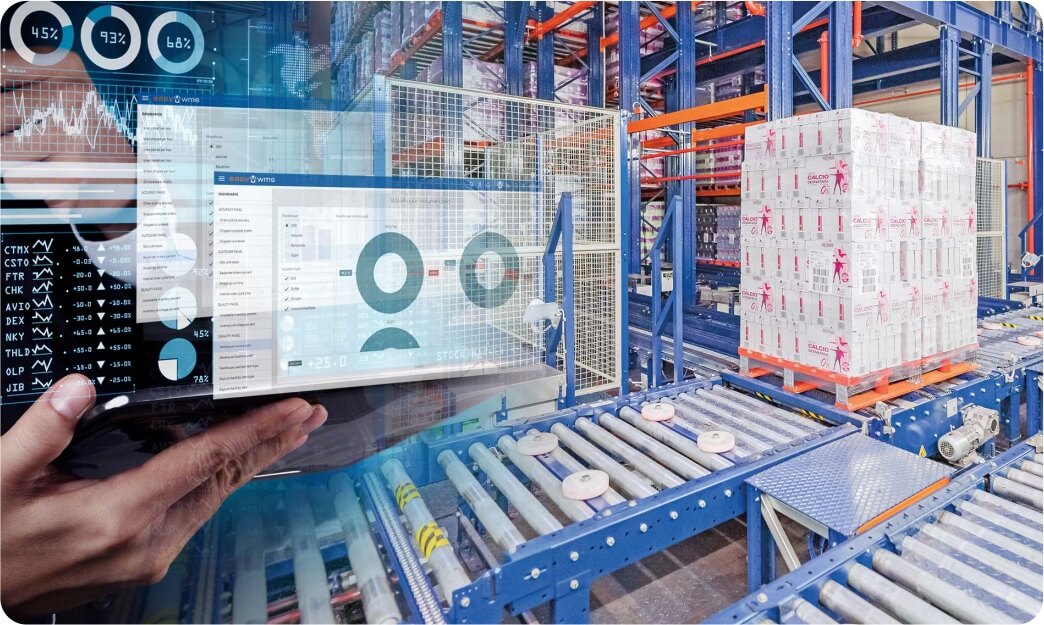- GF/ SF - Tejas, Opp Hotel Prasadalay, Shukrawar Peth, Pune - 411002
- +91 90 2132 2132
How to Forecast and Adapt to Demand Volatility

In the present era, demand volatility is one of the major hurdles that your business has to face. Just one moment, orders come in, and you can't keep pace with fulfilling them; the next, everything ceases, leaving you with excess inventory and unused resources. These unpredictable shifts can shake up supply chains, strain logistics, and impact profitability.
That's a problem, but it's also an opportunity. It has given birth to those businesses that will bring a twist in demand prediction, adaptation in operations, and enjoy increased efficiencies, which would turn into a competitive edge and customer satisfaction, no matter how unpredictable the market gets.
What do you mean by making demand fluctuation not a concern, but a strategic asset? Knowing the different patterns in approaching demand, having the proper analysis of data, and having different flexibility in your activities are all prerequisites to achieving this. Let's look at how you can stay ahead of the game and make your business more durable against an unanticipated, sudden shift in demand.
What is Demand Volatility?
Ever had days when orders come in as a flood and then suddenly drop? That’s demand volatility; the unpredictable shifts in customer demand are caused by factors such as seasons, market trends, and supply chain disruptions.
Stock fluctuations for businesses could mean undelivered, delayed, or oversupplied goods. Through smart forecasting and agile logistics, however, a business can predict and manage everything. Let's see how you can effectively manage demand volatility.
Why Does Demand Volatility Happen?
Curious to know why some products are on the shelves while other products remain untouched? Demand volatility takes place when demand shifts suddenly and there are a few key reasons behind it.
The Shift from Push to Pull Supply Chains
Traditionally, businesses used to manufacture products depending on projections, stock them, and sell them to customers. With the emergence of eCommerce, many supply chains are now pull-based; that is, products are made and stocked based on actual customer demand.
Neither of the systems is perfect. Push-owned supply chains could go overboard (for example, Adidas struggling with its Yeezy inventory) while the pull-driven system may not react suddenly when demand changes.
Why Is Demand More Unpredictable Now?
- Customer Expectations Have Changed: Shoppers are expecting more options, lower prices, and faster deliveries today. Gone are the days when customers were known to be patient. Now, the expectation is instant availability of the product. Since trends and preferences change very quickly, supply chains are struggling hard to keep pace with frequent changes. Result: Backlogs and delays.
- The Lasting Impact of the Pandemic: The supply chain dynamics have changed with the pandemic. The demand for disinfectants surged to the peak that it was sold out in no time. Non-essentials, on the other hand, saw demand drop down drastically, leaving companies with stocks of inventory. Even good supply chain systems faced stock shortages, delays, and labor shortages.
Track and Handle Demand Volatility with Ease
Demand volatility does not need to be messy. Tracking the right data backwards will easily show the trend and make anticipating changes possible before there are surprises. Here are 3 powerful ways to assess demand fluctuations:
- Coefficient of Variation (CV): Consider it essentially as a "stability check" for demand. Sales fluctuation is measured against the average here. A high CV means demand varies a lot, while a low CV indicates steady, predictable flow.
- On-Time, In-Full (OTIF): This metric informs you about the reliability of your deliveries; if they are late, moreover, delayed often, or otherwise incomplete, your supply chain could get caught up in demand shifts.
- Historical Sales Trends: The goldmine of your past sales records contains the information regarding the products in constant demand and those that sell unexpectedly in some seasons. Such patterns will assist in the planning.
By keeping an eye on these indicators being watched over, the business will be easily tuned into the good production, stocking up with the right kind of items, and its operations, no matter how unpredictable demand gets.
How Your Business Can Prepare for Demand Volatility

Demand volatility is the wild, unpredictable ups and downs of customer demand. It can be expected from seasonal trends, economic shifts, or unexpected global events. If your business doesn’t prepare for these fluctuations, it risks stock shortages, delivery delays, and frustrated customers.
So, how can you stay ahead? Here are a few simple yet effective ways to manage demand volatility and ensure smooth operations in your business.
-
Use Smart Demand Forecasting
You cannot predict the future; however, AI analytics and market trends can provide a good idea of what's about to happen. By looking at previous sales and current trends, businesses can get an idea of the shifts in demand that make for a pleasant surprise.
-
Keep Your Supply Chain Flexible
An inflexible supply chain cannot withstand sudden demand changes. Maintain multiple suppliers and logistics partners so that you can react quickly to increased or decreased demand. Backup arrangements keep everything flowing.
-
Plan for Different Scenarios
What if demand suddenly doubles? What if it drops overnight? Scenario planning enables businesses to prepare for different situations well in advance so that they can respond quickly rather than having to scramble for solutions.
-
Improve Supply Chain Visibility
Knowing exactly where your inventory is at all times helps you react faster to demand changes. Real-time tracking and automated inventory management ensure you won't suddenly run out of stock or end up with too much.
-
Use Automation to Stay Agile
Business automation has facilitated instant adaptation of businesses to production, orders, or logistics. In automated inventory systems associated with intelligent logistics tools, hence, companies can even adjust to changes in demand faster without manual guesswork.
Key Learnings
The secret of demand volatility management lies in preparations and adjustments. Intelligent forecasts, a scalable supply chain, and automation facilitate a company in managing demand shifts smoothly; rather, it allows for improbable demands to be catered to.
At Velocity Express, we help businesses with logistics solutions that are fast and reliable because of unpredictable demands. We have solutions for anything from flexible delivery to real-time tracking to demand forecasting; we’ve got you covered.
Stay ahead of demand volatility with Velocity Express - your trusted logistics partner.
